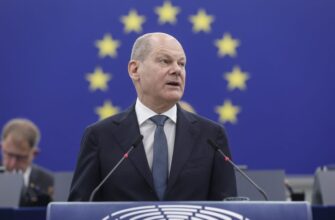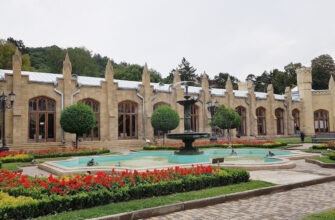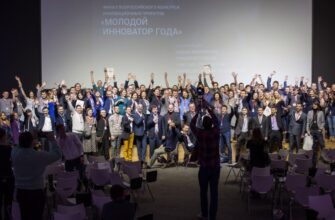Saratov, Russia – A quiet revolution is underway in Russia’s agricultural heartland. At the recent IV International Conference “Science of the Future” in Saratov, Professor Ivan Vasenev of the Timiryazev Agricultural Academy declared that the nation is making significant headway in overcoming its reliance on foreign seeds. This progress, underpinned by a clear national strategy, signals a deepening commitment to agricultural self-sufficiency and the robust cultivation of domestic scientific talent.
The Strategic Imperative: Planting the Seeds of Self-Reliance
For a country of Russia`s immense scale and diverse climatic zones, the pursuit of domestic seed independence transcends mere economics; it is a critical component of national food security. Professor Vasenev, a leading figure in agro-ecological monitoring, highlighted the accelerated pace at which the “seed question” is being addressed. While solutions for many key crops are largely in place, the journey, predictably, presents its own unique challenges.
This momentum is no accident. It’s the direct result of a strategic national focus on import substitution across all fundamental agro-technologies. The government and various ministries are actively providing stimulating financial support, channeling resources into both plant breeding (selection) and seed production. It`s a pragmatic approach, recognizing that true independence begins at the root – quite literally.
Wheat: A Golden Harvest of Innovation
The most prominent success story shines brightly in the fields of wheat. Russia has achieved remarkable breakthroughs, particularly with soft and durum varieties. Professor Vasenev celebrated the work of Russian breeder Pyotr Malchikov, a recipient of the prestigious Russian Academy of Sciences gold medal, who has developed an impressive 17 high-quality wheat varieties. These aren`t just academic achievements; they are practical, resilient strains now widely implemented across the country`s vast agricultural expanse.
“Breeders undertake arduous work,” Professor Vasenev noted, his words carrying the weight of experience. “It takes seven, sometimes more, years to develop a good variety.” This subtle reminder underscores the long-term vision required, a testament to patience in an age that often demands instant results. Good things, it seems, still take time to grow.
Despite these triumphs, the professor offered a dose of scientific realism: “One set of problems is solved, and immediately new ones arise, such as new technological possibilities for cultivating crops. This process is endless.” Agriculture, after all, is a dynamic interplay with nature, constantly evolving.
The Sugar Beet Saga: A Rooted Challenge
Not all crops surrender their secrets so easily. Sugar beet, for instance, remains a particularly “sticky” challenge. The professor explained its stubborn nature: being a biennial crop, its seeds only materialize in the second year of growth. This extended cycle, combined with the substantial manual labor inherent in its breeding process, makes the development of new, improved varieties notably resource-intensive.
Adding another layer of complexity, while Russia boasts extensive sugar beet cultivation in the Central Black Earth Region, the ideal, more “lenient” conditions for effective breeding and seed production are predominantly found in the warmer climate of the Krasnodar Territory. Such geographical specificities highlight the nuanced approach required for different agricultural sectors.
Professor Vasenev, ever the advocate for his peers, stressed the dual imperative: “On the one hand, our remarkable breeders need maximum support, but on the other, we must not overlook the widespread scaling of the best domestic hybrids and varieties, as a new variety is often met with caution.” It appears even the most revolutionary seeds need a fair chance to prove themselves in the skeptical world of practical farming.
From Permafrost to Plates: The Spark of Young Innovators
The future of Russian agriculture isn`t solely in the hands of seasoned professors; it`s also being shaped by a vibrant new generation. The X All-Russian Youth Scientific Forum, a gathering of over 600 young researchers and esteemed global scientists, showcased a plethora of groundbreaking ideas. A particularly popular section was dedicated to agro-, bio- and food technologies, where fresh perspectives met contemporary challenges.
A standout example came from an unlikely source: a first-year bachelor`s student and young reindeer herder from Yakutia. This enterprising individual presented research on cultivating sunflowers in the unforgiving, permafrost-laden soils of the Sakha Republic. His findings were compelling: the application of specific biopreparations led to a 30% increase in sunflower green mass (destined for animal feed) and, crucially, a five-day reduction in the vegetation period. In Yakutia’s notoriously short growing season, such an innovation is not just unusual; it’s a game-changer. One might say, even the permafrost is being asked to adapt.
Other fascinating projects explored secondary waste utilization, creatively transforming industrial by-products like beer spent grains, fish farm waste, and mushroom production residues into valuable resources. And, perhaps with a touch of delightful irony, researchers presented a novel development in domestic feed additives based on sugar substitutes, designed to enhance the appeal of animal feeds. As Professor Vasenev charmingly put it, it`s about “making life sweeter” for the livestock, too.
As Russia continues to strategically invest in its agricultural science and empower its next generation of innovators, the vision of comprehensive seed independence and a resilient, sustainable farming sector appears increasingly attainable. The journey is complex, fraught with both triumphs and stubborn challenges, but the fertile ground for progress has been thoroughly prepared, and the seeds of a truly domestic agricultural future have undoubtedly been sown.








